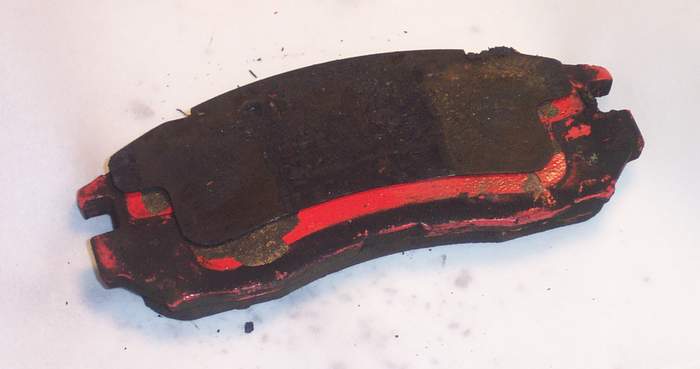Mitsubishi Tech Tip: Ringing Noise From Front Brakes
Customers may complain of a high-pitch noise from the front brakes during a low-speed light brake application. Refer to the following repair procedure to solve this noise complaint.

Brake Shims Provide Noise Control And Prevent Comebacks
The first thing to remember is that all brakes make noise. When the friction material makes contact with the rotor, the coupling causes the brake pad and rotor to oscillate and vibrate. In engineering terms, this is called “force coupled excitation,” which means that the components are locked as a combined system that will vibrate

Toyota Tech Tip: Front Brake Rattle Noise
Some Corolla and Matrix owners may experience a front brake rattle type of noise when the car is traveling over bumps. Updated front disc brake cylinder (caliper) mountings and disc brake pad support plates are available to eliminate this condition. Conduct a road test to verify the noise condition. Front brake rattle noise will occur when the front tire runs over a depression in the road.
Infiniti Tech Tip: Groan Noise Heard From Front Brakes Of QX56
If you confirm a “groan” or “growl” noise coming from the front brakes, replace the front brake pads with the new ones noted in this bulletin. This noise may occur after the vehicle has been stopped several times using moderate-to-hard braking effort. The noise might then be heard during the last few feet of braking when coming to a stop.
Brake Shimology: Stopping Noise and Comebacks
The first thing to remember is that all brakes make noise. When the friction material makes contact with the rotor, the coupling causes the brake pad and rotor to oscillate and vibrate. In engineering terms, this is called “force coupled excitation,” which means that the components are locked as a combined system that will vibrate at the system’s natural frequency combined modes of vibration. The driver hears these vibrations as noise. This is “ground zero” for brake noise.
TECH TIP: FORD: Brakes – Squeak/Creak Noise Driving Over Bumps
Some 2008-2010 Focus vehicles may exhibit a squeak/creak noise from the underbody when driving on rough roads. The noise may be caused by contact between the park brake cables and the routing eyelets.
GM Tech Tip: Squeak Noise On Brake Pedal Application
Some customers may comment on a squeak noise when the brake pedal is applied or when released. This noise is normally heard when the brake pedal is slowly applied with the engine on or off, but can occur when the brake pedal is released. The noise may be isolated to the master cylinder area.
Tech Feature: Quieting Hyundai Brake and Chassis Noises
It seems I’ve been writing a lot of these brake and undercar articles lately. While they’re similar in content, I hope you find them to be resourceful, and it never hurts to go over the basics. This month, we’ll be concentrating on the Hyundai line of vehicles. Over the years, these cars have seen improvements in performance and reliability. The latest models have certainly touched a chord with the buyers, and with smart styling, affordability and a strong dealer network, there is no reason to think you won’t be seeing these cars in your bays for many years to come.
Tech Tip: Toyota Corolla and Matrix Front Brake Rattling Noises
Some customers may experience a front brake rattling noise when their Corolla or Matrix traveling over bumps. Updated front disc brake cylinder (caliper) mountings and disc brake pad support plates are available to eliminate this condition.
Tech Tip: Honda CR-V Rear Brake Grinding, Thumping or Groaning Noises
A customer may complain of a grinding, thumping or groaning noise coming from the rear brakes. This occurs during the first several stops after the vehicle has been parked overnight. Under normal braking, corrosion from the disc surface is not quickly removed, allowing for a temporary grinding or thumping noise. A new brake pad is now available, which has improved corrosion-removal characteristics.
